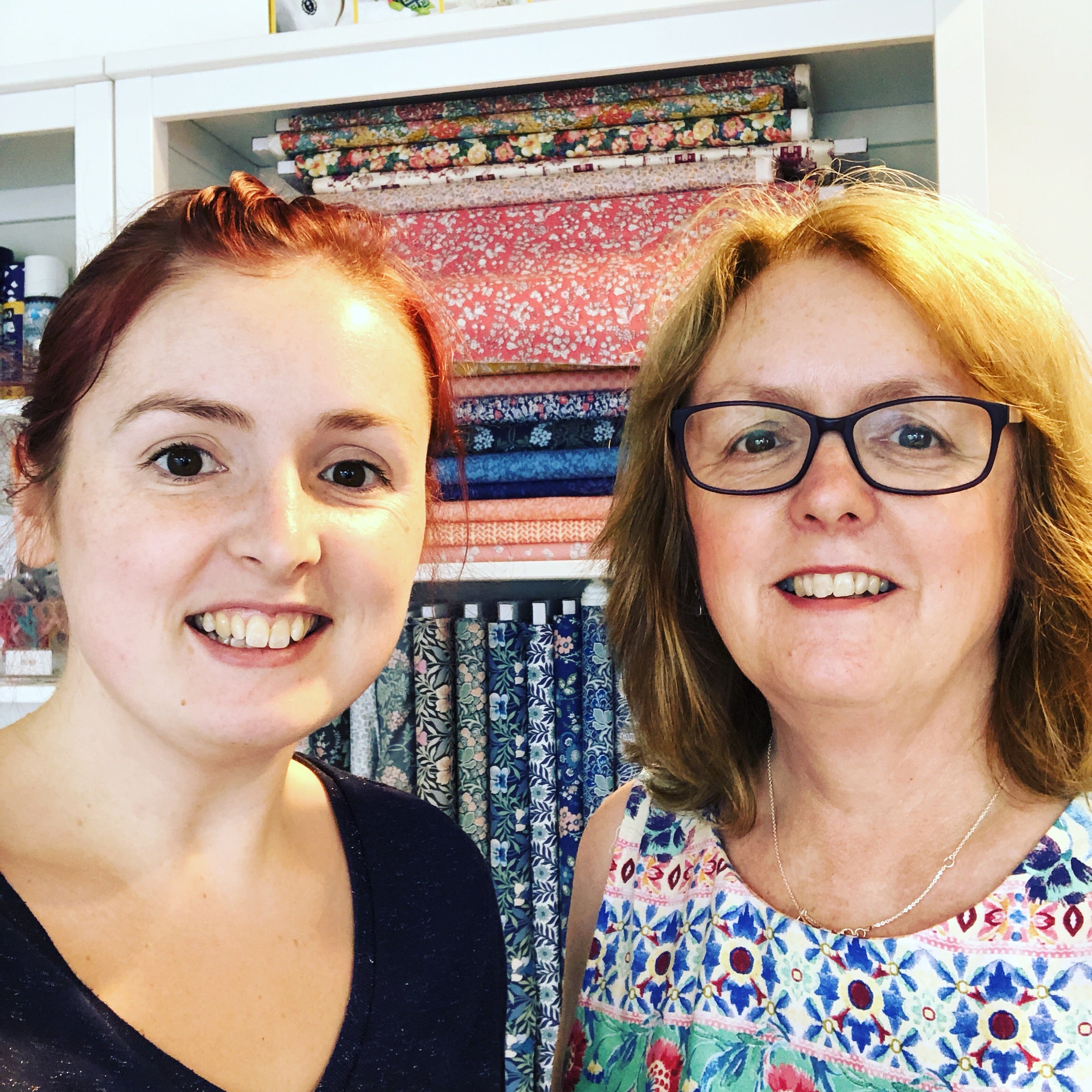Even the best of us can feel beaten when it comes to attempting to sew certain fabrics - chiffons, silks, satins and suiting can all be tricky fabrics to work with, to name but a few. If you're struggling, don't give up - have a quick read below and get back on track!
Sewing Tips and Tricks: How to Sew Tricky Fabrics
How to sew slippery fabrics - fine chiffon, charmeuse, satins etc
These can be a total nightmare to sew straight lines in, as the fabric is usually so light and/or silky that it moves with hardly any encouragement. To help eliminate movement you can try a number of different techniques.
The easiest (or rather, most convenient) method is to do a hell of a lot of pinning. If you pin every couple of centimetres, it ensures minimum slippage, although it feels like a total pain to sew. Remember, it's not as bad as attempting to sew the same hem three times and unpicking all the stitching!
Another technique is to use basting stitches to hold it in place. Whilst this can be a good way of keeping it together, I would highlight that this is not great for all fabrics - some fabrics show marks where the basting stitches were, so check on a bit of scrap before you start basting and sewing, then realise you've ruined the fabric.
Some people also find using tissue paper or the actual pattern paper is helpful. You can sew over it, eliminating some of the slippage, and then simply tear off the paper afterwards. Don't forget, however, that this means you may not be able to use the pattern afterwards if it tears apart too much!
If you're willing to invest some money and a bit of risk, there are also temporary adhesive sprays now available which create a slightly tacky surface on the fabric and help keep everything in place. Some people swear by these as miracle products, but be warned that you will need to patch test them as they cannot guarantee it won't mark your fabric either.
Finally - make a cuppa, take a deep breath and gather your focus! Half the battle is having the patience and mental energy to concentrate hard and take it one step at a time without getting flustered and letting it affect your sewing. Using a new, sharp needle can be helpful too!
How to sew stretch fabrics - knits like jersey, lycra etc
Stretch fabrics have to be treated with extra care when you're sewing them as they're easily prone to being warped and stretched as you sew - one key rule to remember is not to over-encourage the fabric under the machine. Let the feeder move it naturally.
Make sure you are using the right stitch for the fabric. I wouldn't recommend using straight stitch on stretch fabrics as it has a tendency to overstretch and warp the fabric as you sew, as well as risking ripping when wearing the garment. Select a zigzag stitch on your machine, and choose a width and length setting that you think is firm enough and pretty enough - practice on some folded scrap pieces before you begin to get it right. Zigzag stitch allows for more movement when wearing the garment as well as being more accommodating under the needle.
Another top tip - make sure you're using the correct needle! If your fabric has quite a bit of stretch, then I'd suggest using a stretch needle as these are specifically designed for handling your fabric. You can, of course, use a stretch needle on all types and weights of stretch fabric. A ballpoint needle is okay for lighter stretch fabrics, as its slightly curved/rounded which means it can loop in-between the knots of the knit, rather than catching on them.
One more thing you can get to help with sewing stretchy fabric is a different presser foot - a walking foot is particularly helpful. It allows the fabric to be fed under the needle with more grip, stopping the two layers from stretching against each other. Some machines come with a walking foot, others may have a dual feed foot - you can use either, but check your manual for what is best.
How to sew bulky fabrics - suiting, coat fabric, wools and tweeds
Sewing bulky fabric like denim or coat fabrics can get pretty tricky, usually just due to the sheer amount of layers of thick fabric you're trying to get under the presser foot. Simple tricks include pressing seams open and trimming seam allowances to help reduce bulk and create a flatter surface, but sometimes it requires a bit more help than that!
One of the best solutions to this problem could be to invest in a walking foot, which like for stretch fabrics, keeps the layers feeding through evenly without one getting stuck.
Make sure you're using an appropriate needle too - a denim needle is ideal, and prepared for use with tougher fabric, whereas standard machine needles might break under the pressure. You might find that increasing the stitch length also helps.
If you're still having trouble getting the fabric to feed under the presser foot effectively, using the wedge method is another good solution. Often, and especially when starting to stitch your layers of fabric, the presser foot is lifted up at an angle at the front. This prevents the fabric from moving through easily as the back sort of jars the feed. In order to put pressure onto the front of the presser foot and make it lay flatter, fold a bit of fabric to a similar thickness and use this as a "wedge" at the back of the footer. This should even out the pressure and get your fabric under the presser foot fully, to continue stitching.
How to sew plush fabric
So I think you're probably starting to see a theme here...
Plush fabric is often hailed as one of the hardest fabrics to sew with, often putting beginners off from using it. But fear not - the difficulties are easy to resolve with a bit of extra TLC to the process!
Firstly, make sure you don't overstretch the fabric when cutting. A good idea is to pin the edges together to keep everything equal and in place. If you've cut it wonky to begin with, you're already fighting a harder battle than you need to be!
Next, pin like your life depends on it! Like stretch and slippery fabrics, plush fabric is prone to being stretched out of shape easily, so the closer you pin it the less likely this is to happen - I recommend every 2cm or so. It seems excessive, but gaps that are too bag allow the fabric to slip still, and although its a pain to keep stopping to take pins out, it means you'll only have to stitch it once!
As with the other fabrics, a walking foot is a good solution to problematic stitching here. As with the other fabrics, it helps feed both layers in at the same rate, limiting the amount of warping or overstretching.
Another great tip for sewing with plush fabric is to ensure you're stitching with the nap of the fabric, rather than against it. This doesn't affect the straightness of your stitching, but sewing with the nap rather than against it ensures that it lays flatter, giving a neater and more professional finish.

